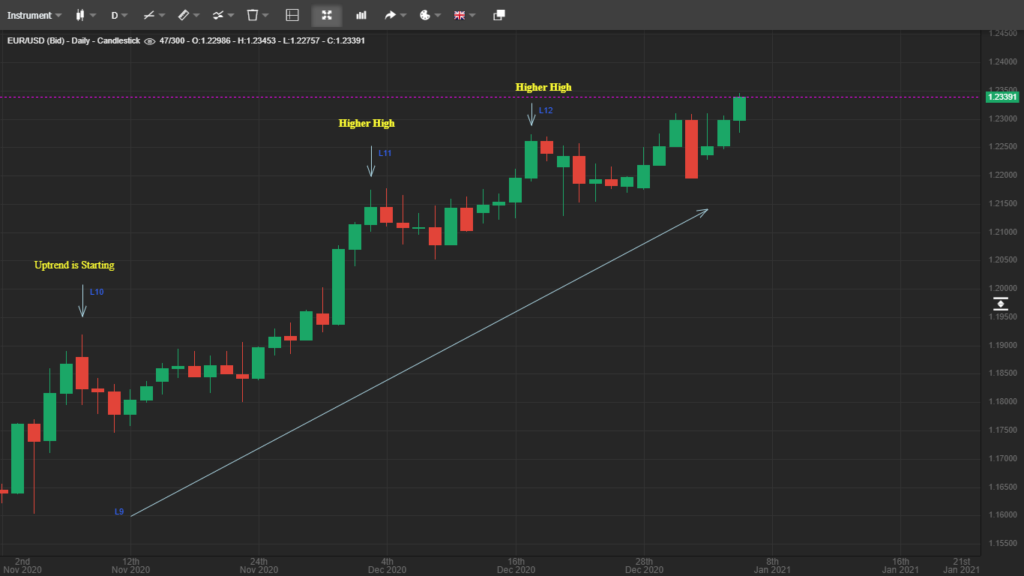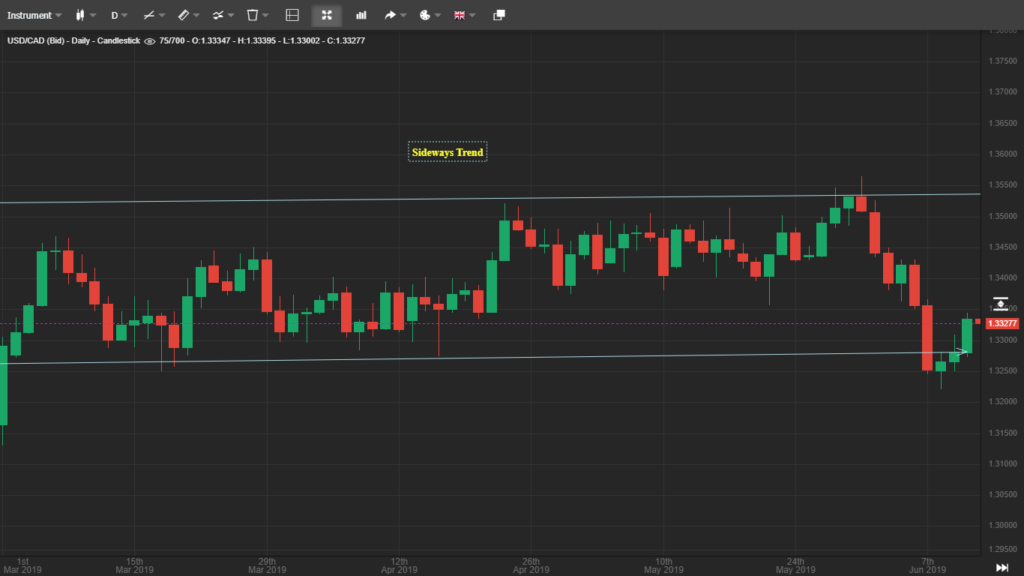Types of Trends
The price movement of a financial instrument in an identifiable direction is called a trend. Trend identification is the most basic function of technical analysis. A trend offers the opportunity to trade in its direction which enables a trader to capture a large movement.
Generally, trade in the direction of the trend is considered safer. Therefore the first step in trend analysis is to identify its direction. The simplest way to identify a trend direction is by looking at the chart. An uptrend would typically have higher highs while a downtrend would have lower lows.
Remember that the price does not moving up or down in a straight line therefore you would also see small corrections even in a trending market. When you spot the trend direction those corrections provide the opportunity to trade at a better price.
Trend Classification
The trends are mainly classified as major, intermediate, and minor trends. A major trend is made of several small trends. A minor trend is a trend that occurs within a larger it also helps to form the shape of a large trend. An intermediate trend is basically a consolidation phase that signals the making of a larger trend.
A longer intermediate trend is generally followed by even a longer major trend. Similarly, an intermediate trend can also form towards the end of a major which can be taken as the signal of a trend reversal.
Below is an example of the EUR/USD chart in which you can see an intermediate trend that is followed by a major uptrend. You can also see the minor trend within the major uptrend.



